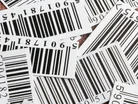Healthcare Supply Chain Salutes Barcode's 50th Anniversary

The humble barcode recently marked its 50th anniversary, and what began as a means to organise and regulate high street retail supply chains has gone on to also shape the healthcare sector.
The Universal Product Code (UPC) barcode was introduced on June 26, 1974, by GS1 US, a not-for-profit information standards organisation.
GS1 US helps its members implement global supply chain standards for unique identification, data capture and data sharing between trading partners.
The first item scanned was a 10-pack of Wrigley's chewing gum, and it began an era of retail and supply chain automation. In 1976, the original 12-digit code was expanded to 13 digits, which allowed the identification system to be used outside the US.
Today, the barcode is used to identify over 1 billion products and is scanned more than 10 billion times daily, and serves as a cornerstone of global commerce.
Healthcare barcodes improve patient safety
Since 2008, GS1 Healthcare members have been driving the adoption and implementation of GS1 Standards to improve patient safety and supply chain efficiency.
In healthcare – as in other sectors – GS1 Standards create a common foundation for business by identifying, accurately capturing and automatically sharing vital information about products, locations, assets and more, in a consistent, repeatable way that scales across industries.
If stakeholders have different processes and systems, straightforward information sharing can waste time and be highly susceptible to human error.
GS1 Healthcare US brings together members from all segments of the industry to address the supply chain issues that most impact US healthcare providers in the US using GS1 Standards.
Among the data barcodes identify using GS1 standards is:
- Location identification, using Global Location Numbers (GLNs)
- Product identification, using Global Trade Item Numbers (GTINs) • Product data sharing with Global Data Synchronisation Network
- Unique device identification for medical devices
- Product serialisation, track and trace, and drug pedigree processes using GS1 Visibility standards
The GS1 standards also play a key role in in supply chain sustainability, because it’s no longer enough for a company to just say its operations are sustainable, its raw materials are ethically sourced or its products are made from recycled materials – they must be able to prove it.
This is where GS1 Standards play a pivotal role. To meet consumer demands, companies need complete, accurate and trusted data to back up their claims.
As this data continues to be collected, digitised and shared in a standardised way, companies have what they need for verified transparency with trading partners and customers.
The 2D barcode has proved valuable in healthcare because the amount of data contained delivers a wealth of consumer-engaging experiences and opportunities, while also ensuring trusted, vital brand information for consumers and enhancing many back office supply chain functions.
GS1 Healthcare members enjoy supply chain visibility
Meri Stevens, Chief Operations Officer of Kenvue – a Johnson & Johnson subsidiary – says: "Widespread implementation of 2D barcodes is critical to a future with digital leaflets, enabling individuals to make informed decisions about their health and reducing paper use.”
Kenvue was formerly the Consumer Healthcare division of Johnson & Johnson, and is the proprietor of well-known brands such as Aveeno, Band-Aid, Benadryl, Listerine and Neutrogena.
Stevens adds: “The ability to embed details, including serial numbers, batch/lot numbers and expiration dates in a 2D barcode enables vast improvements in traceability and supply chain visibility.
“Widespread implementation of 2D barcodes also helps the the healthcare industry “efficiently manage inventory, while ensuring products are available at the right place and at the right time to meet consumer needs”.



